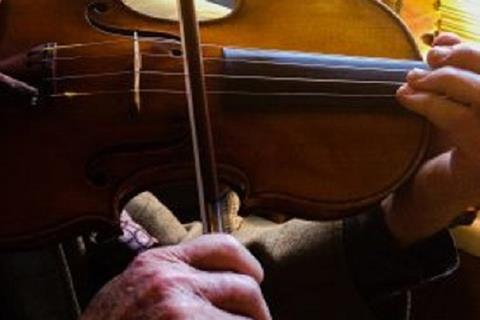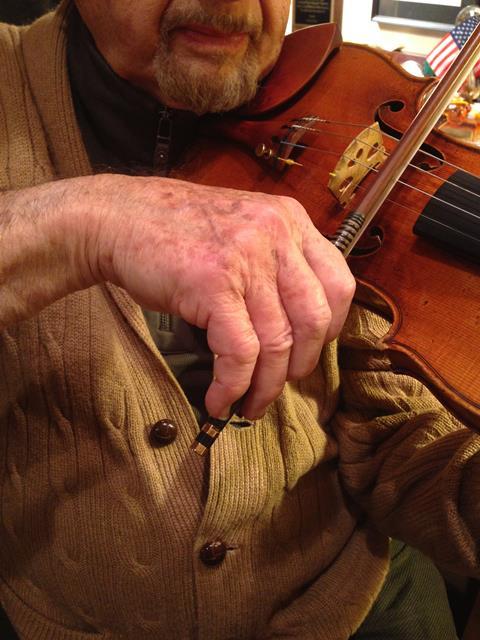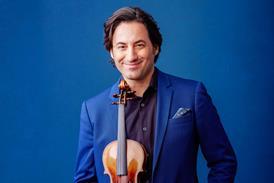The American violinist examines the role of the bow in tone production. From 2013

Explore more Technique like this in The Strad Playing Hub
How do you produce a beautiful tone? It is a question frequently asked. The simple answer is: with the bow. There is no sound until the bow touches the strings. Several factors are involved and coordinated in order to achieve the desired tone using the bow: grip, finger pressure, bow speed and bow changes.
With the grip, the fingers must be close together – not spread apart with the index finger extended. Three fingers draw the sound, with the little finger close but not pressing. The basic grips primarily in use today stem from two schools:
The Franco-Belgian, epitomised by Eugène Ysaÿe:

The Russian School, by Leopold Auer:

My great teacher Efrem Zimbalist, who was a pupil of Auer, introduced me to the Russian School. He was an exponent of the long bow and drawing a thick sound on the flatter hair. When playing a work such as the Tchaikovsky Violin Concerto I use the Russian grip because I want a thicker sound. It was Leon Sametini, a pupil of Ysaÿe, who taught me the Franco-Belgian grip that I use for playing works by composers such as Mozart and Bach, and pyrotechnical works. I employ both grips depending on the composer, and the textures and nuances you can achieve will be subtly affected by the grip you use.
Read: Bow holds of the great violinists
Listen: The Strad Podcast Episode #40: Naomi Yandell on teaching beginner bow holds
Read: Violin Bow Hold: Positioning the fingers on the bow
Discover more Technique like this in The Strad Playing Hub
With both types of grip, one must practise creating the sound that can be made when one draws the bow without exerting pressure on the stick. Most importantly, do not tighten the hair so much that the bow loses its arc. The bow stick must vibrate to produce its own sound – a good reason why bows by makers such as Peccatte or Tourte are so expensive. The pressure should only come from your hand and fingers, not your arm. The amount of pressure applied must be proportionate to your bow speed – herein lies the secret to creating a quality tone rather than a forced tone. Try using a flat hair on the down bow to get a thicker tone. Draw with the fingers working closely together and the palm facing out. On the up bow, the stick is turned slightly and played at an angle.
Remember that all moves are circular at the point and frog. We perform figure of eights at all times. When I was twelve years old I auditioned for Leon Sametini, and after I had played he told me that my left hand was good enough to play anything but my right hand needed work. For six months I had lessons on open strings, drawing the bow from frog to tip. For diversion I was given Handel’s Sonata in D major, but I never got past the first two lines of the first movement. An occasional wrap on the wrist with a yardstick kept my wrist down and flexible so that my fingers could affect seamless bow changes. My best advice would be to spend the first five to ten minutes of your daily practice session drawing bows on an open A string, making sure that between the up and down bows the sound does not break. If you can master this bow technique, your tone will certainly improve.






















































No comments yet